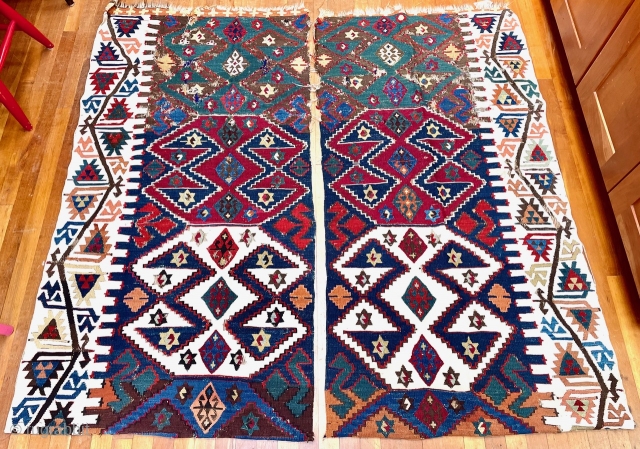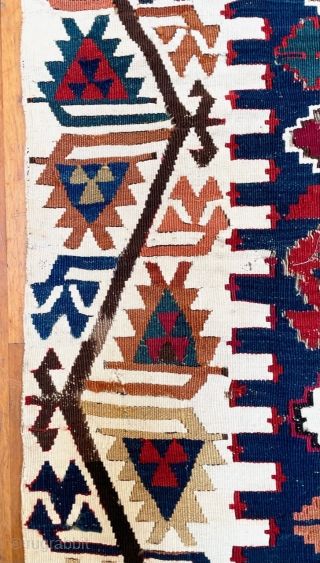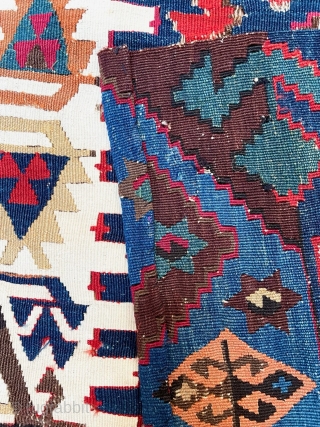Back
Two large fragments of an antique (19th c) Anatolian kilim. Each is approximately 65” x 33” (165 cm x 84 cm). Kilims like this were woven in two long, narrower halves, which were then seamed up the center to make a wider kilim. It is not clear if these two pieces were originally parts of one vertical strip, or if each was part of a separate matching strip, and would have been joined in the orientation seen in the first pictures. Great natural colors---the white is cotton, which accounts for its brilliance. One end of each piece is naturally worn and fraying, and the opposite end of each is folded twice and hemmed (last pictures). The spectacular wide side borders did not continue across the ends-- each worn end has remnants of an end border that continues to the sides, terminating the side borders. Most of the wear seen is due to the corrosive brown/black dye—most obviously where larger motifs are in this color, near the naturally worn end of each piece. Otherwise condition is relatively good. Contact me at rjemry@gmail.com.
price:
SOLD. THANKS
- Home
- Antique Rugs by Region
- Category
- Profiles
- Post Items Free
- Albums
- Benaki Museum of Islamic Art
- Budapest: Ottoman Carpets
- Gulbenkian Museum
- Islamic Carpets. Brooklyn
- Islamic Textiles. Brooklyn
- Konya Museum: Rugs
- MKG, Hamburg
- MMA: Caucasian Carpets
- MMA: Mamluk Carpets
- MMA: Mughal Indian Carpets
- MMA: Ottoman Carpets
- MMA: Safavid Persian Carpets
- MMA: Turkmen Rugs
- McCoy Jones Kilims
- Ottoman textiles. Met
- Philadelphia Museum
- Rugs and Carpets: Berlin
- Seljuqs at the Met
- TIEM, Istanbul: Carpets
- V&A: Classical Carpets
- Vakiflar Carpets: Istanbul
- Baluch Rugs: Indianapolis
- Gallery Exhibitions
- Jaf an Exhibition
- Alberto Levi Gallery
- Andean Textile
- Christie's London: 2016
- Francesca Galloway
- HALI at 40
- ICOC Washington, DC 2018
- Jajims of the Shahsavan
- London Islamic Week April, 2018
- Mongolian Felts
- Navajo Rugs: JB Moore
- Persian Piled Weavings
- SF Tribal & Textile Art Show 2020
- SF Tribal 2019
- Sotheby's: C. Alexander
- Turkish Prayer Rugs
- Turkmen Main Carpets ICOC 2007
















